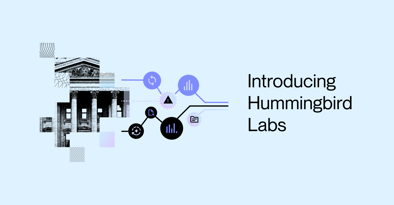Automation vs. AI: How (and Where!) to Use Each to Improve Compliance Operations

Hummingbird
Introduction: What's the difference, really?
How do Automation and AI differ in the world of compliance? It's a great question. Let's break it down:
- Automation refers to any use of software applications or other programming tools to complete a process. Processes have predefined steps, tasks, and outcomes, and the value of automation comes from no longer requiring a human worker to manually bring the process to completion.
- AI is best understood as the application of artificial intelligence tools for the purposes of augmenting human intelligence, creating new value by helping produce previously inaccessible levels of insight or analysis, and generally enhancing human work.
Why should I care?
Your compliance program is built from a complex web of step-by-step processes and human decision-making. Given that automation tools can help drive efficiency with process-based workflows, and AI with human decision-making, it’s worth knowing exactly where the boundaries of each type of work begin and end. Why? Because incorrectly applying AI to a practice area better served by automation (or attempting to automate a procedure best handled by a human + AI team) will both result in wasted time and effort, and fail to deliver results.
A Word of Warning
We’re all living through a time of rapid technological change, and nothing is changing faster than AI. But don’t be fooled by companies that have taken advantage of the hype surrounding generative AI to promote products that are (at best) a narrow AI integration, or (worse) aren’t really AI at all.
Don’t want to waste your time with imposters? Make sure you can tell the difference between Automation and AI. Here’s a breakdown of key differences that’ll help you know what you’re seeing – and what you’re being sold.
| Automation | AI |
| Automates existing compliance tasks; frees people from predictable, repetitive work. | Creates new value that didn’t exist before, such as generating summaries or recommendations. |
| Rule-based; follows predetermined instructions. | Capable of making predictions and decisions that change depending on the data available. |
| Doesn’t involve any human interaction. Once the rules are set, workflows run in the background. | Allows for human interaction, such as answering questions or adapting to different prompts. |
| Has existed in the market (in various forms) for a some time. | New to the market with many new applications. |
Wrap-Up
Understanding the differences between Automation and AI is the first step in developing a coherent strategy for putting both of these applications (each incredibly useful in their own way) to work in your compliance program. Interested in learning more? Check out the article and guide below!
Stay Connected
Subscribe to receive new content from Hummingbird


